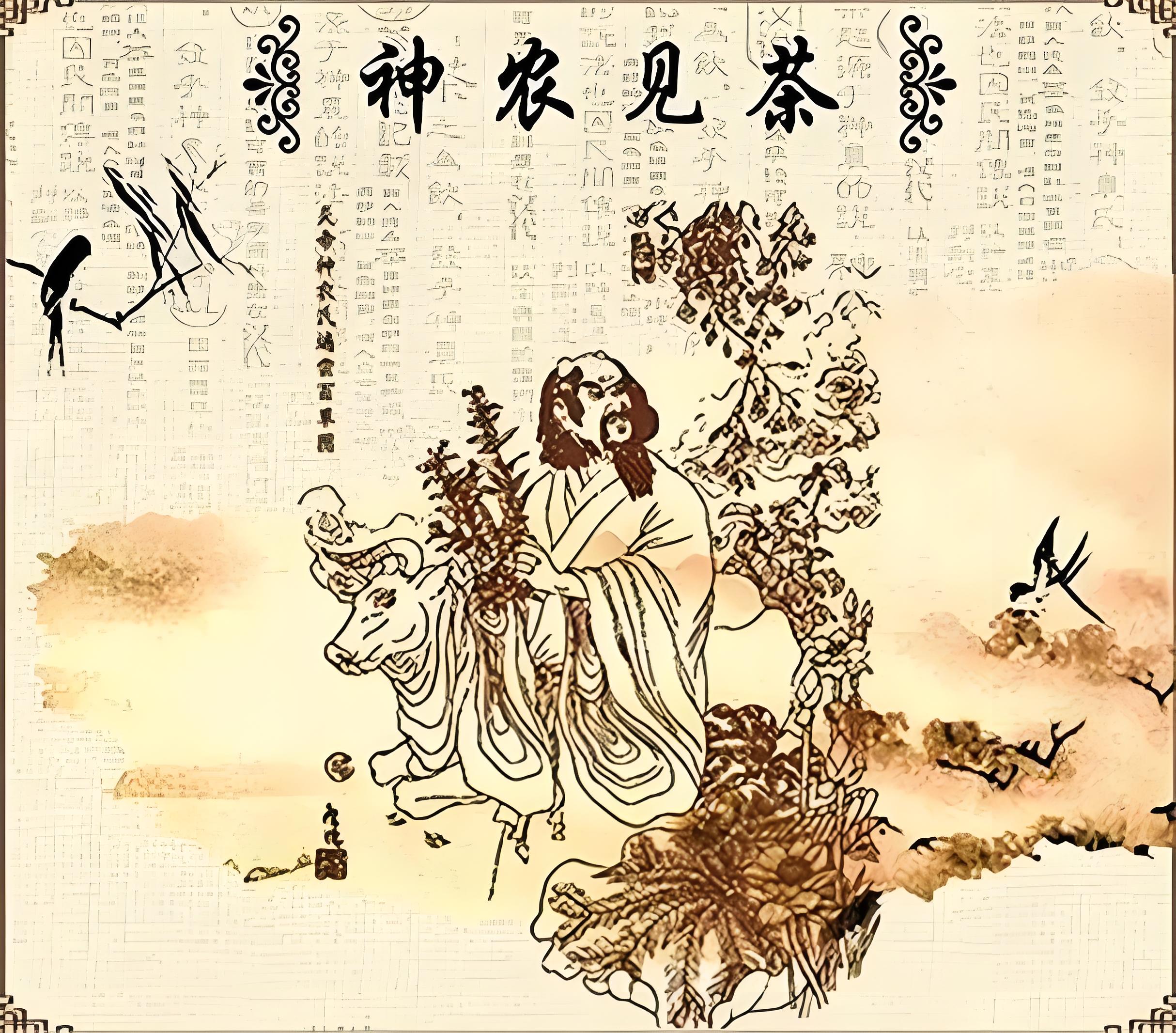Tea is more than just a drink in China. It is a symbol of culture, tradition and harmony. The history of Chinese tea dates back thousands of years, evolving from a medicinal plant to a global phenomenon. This article will delve into the origins, development and cultural significance of Chinese tea, giving you a comprehensive understanding of how this ancient drink has shaped society and continues to captivate the world.
The Origin of Chinese Tea: The Beginning of a Legend
The story of Chinese tea begins with a legend. According to legend, tea was discovered by a mythical figure known as “Shennong” in 2737 BC. At the time, Shennong was boiling water under a wild tea tree, and a few tea leaves floated into the pot, exuding an enchanting aroma. Shennong tasted this unexpected drink and found that it not only refreshed the mind, but also had the effect of detoxification. This is the origin of tea as a drink.
Archaeological evidence also supports the long history of Chinese tea. The earliest physical evidence of tea consumption dates back to the Han Dynasty (206 BC–220 AD), when tea leaves were found in the tomb of Emperor Jing of Han. By this period, tea had transformed from a medicinal plant to an everyday drink.

The Evolution of Chinese Tea Culture
- Tang Dynasty: The Golden Age of Tea Culture
The Tang Dynasty (618–907) is considered the Golden Age of Chinese tea culture. During this period, tea drinking became a refined art, and Lu Yu wrote the first authoritative work on tea, The Classic of Tea. This classic work detailed the cultivation, preparation, and tasting methods of tea, elevating tea to a science.
Tea was no longer just a drink, it became a medium for social interaction and spiritual enlightenment. The Tang Dynasty also saw the rise of the tea ceremony, which emphasized harmony, respect, and tranquility.
- Song Dynasty: The Art of Tea Fighting
During the Song Dynasty (960–1279), tea culture reached new heights. “Tea fighting” became a popular activity, with participants comparing the quality of tea by its color, aroma, and flavor. This period also saw the invention of matcha, a precursor to modern matcha, where powdered tea is stirred into a frothy drink. - Ming and Qing Dynasties: The Rise of Loose Tea
The Ming Dynasty (1368–1644) marked a major shift in the way tea was prepared. Loose tea replaced powdered tea, and the method of brewing whole tea leaves in hot water became mainstream. This change allowed the natural flavor of tea to fully unfold, giving rise to the various types of tea we know today, such as green tea, oolong tea, and black tea.
During the Qing Dynasty (1644–1912), tea became an important export commodity, with Chinese tea exported to Europe and beyond. The British, in particular, had a special liking for Chinese black tea, even sparking the Opium War to balance the trade deficit.

The Global Impact of Chinese Tea
Chinese tea has had a profound impact on global culture and commerce. The Silk Road and the Maritime Silk Road were important trade routes that spread tea to Central Asia, the Middle East, and eventually to Europe. By the 17th century, tea had become a luxury item in Britain and gave rise to the tradition of afternoon tea.
Today, China remains the world’s largest producer and exporter of tea, with iconic varieties such as Longjing Green Tea, Tieguanyin Oolong Tea, and Pu’er Tea enjoying an international reputation.
The Cultural Significance of Chinese Tea
- Tea and Philosophy
Chinese tea culture is closely linked to Confucian, Taoist, and Buddhist thought. Confucianism emphasizes the social function of tea drinking, viewing it as a way to foster relationships and maintain harmony. Taoism sees tea as a means to connect with nature, while Buddhism incorporates tea into meditation practices to achieve mindfulness. - The Art of Tea Ceremony
The Chinese tea ceremony, or “Gongfu tea,” is a ritualized way of brewing and serving tea. It involves precise movements, specialized tools, and a deep appreciation for the sensory experience of tea. The practice embodies Chinese values of respect, humility, and gratitude. - Tea in Modern Life
In contemporary China, tea still occupies an important place in daily life. From bustling teahouses to quiet family gatherings, tea serves as a bridge between tradition and modernity. It is also a symbol of hospitality, and hosts often serve tea to guests to express their welcome.
A timeless legacy
From its mythical origins to its global impact, Chinese tea has spanned centuries, cultures, and continents. More than just a drink, it is a testimony to the wisdom, artistry, and spirit of Chinese civilization. As the world continues to embrace the rich tradition of Chinese tea, its legacy remains vibrant and timeless.



